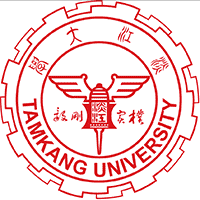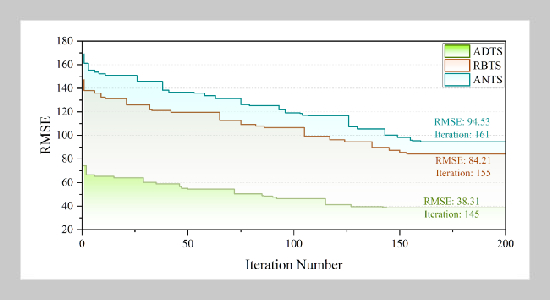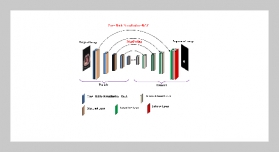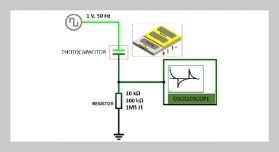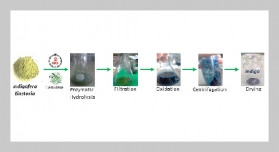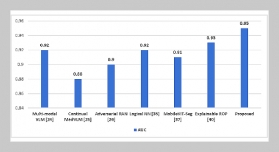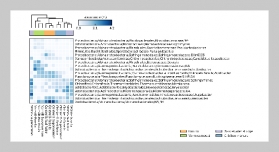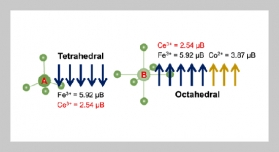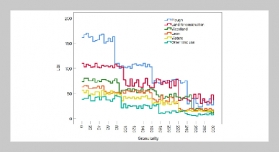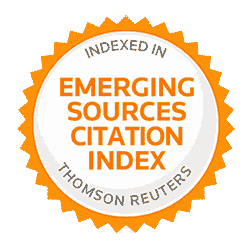- [1] M. Kumar, P. Shreelaxmi, and M. Kamath, (2020) “Re view on characteristics of sewage sludge ash and its partial replacement as binder material in concrete" Recent Trends in Civil Engineering: Select Proceedings of TMSF2019: 65–78. DOI: 10.1007/978-981-15-8293 6_5.
- [2] U. G. Eziefula, H. E. Opara, and B. I. Eziefula, (2020) “Strength of concrete produced with different sources of aggregates from selected parts of Abia and Imo States of Nigeria" Journal of Engineering, Design and Technology 18: 1053–1061. DOI: 10.1108/JEDT-08-2019-0220.
- [3] J.-S. Chou, C.-K. Chiu, M. Farfoura, and I. Al Taharwa, (2011) “Optimizing the prediction accuracy of concrete compressive strength based on a comparison of data-mining techniques" Journal of Computing in Civil Engineering 25: 242–253. DOI: 10.1061/(ASCE)CP.1943-5487.0000088.
- [4] M. A. DeRousseau, J. R. Kasprzyk, and W. V. S. Iii, (2018) “Computational design optimization of concrete mixtures: A review" Cement and concrete research 109: 42–53. DOI: 10.1016/j.cemconres.2018.04.007.
- [5] S. Ghanbarpour, H. Mazaheripour, S. H. Mirmoradi, and A. Barari, (2010) “The effect of type and volume fraction (VF) of steel fiber on the mechanical properties of self-compacting concrete" Journal of Engineering, Design and Technology 8: 247–256. DOI: 10.1108/17260531011086144.
- [6] H. Prayuda, F. Monika, and M. D. Cahyati, (2020) “Fresh properties and compressive strength of self compacting concrete with fines aggregate replacement using red brick powder and rice husk ash" World Journal of Engineering 17: 473–480. DOI: 10.1108/WJE-08-2019-0236.
- [7] E. Khajavi, A. R. T. Khanghah, and A. J. Khiavi. “An efficient prediction of punching shear strength in reinforced concrete slabs through boosting methods and metaheuristic algorithms”. In: Structures. 74. El sevier, 2025, 108519. DOI: 10.1016/j.istruc.2025.108519.
- [8] H. H. Pourghashti, M. M. Ranjbar, and R. Madan doust, (2018) “Experimental investigation of recycled aggregate effect on the concrete properties" International Journal of Structural Integrity 9: 560–571. DOI: 10.1108/IJSI-10-2017-0057.
- [9] M. Kamath, S. Prashant, and M. Kumar, (2021) “Micro-characterisation of alkali activated paste with fly ash-GGBS-metakaolin binder system with ambient setting characteristics" Construction and Building Materials 277: 122323. DOI: 10.1016/j.conbuildmat.2021.122323.
- [10] A. Ahmad,M.Elchalakani, N. Elmesalami, A. E. Re fai, and F. Abed, (2021) “Reliability analysis of strength models for short-concrete columns under concentric loading with FRP rebars through Artificial Neural Network" Journal of Building Engineering 42: 102497. DOI: 10.1016/j.jobe.2021.102497.
- [11] M. K. Loganathan, M. S. Gandhi, and O. P. Gandhi, (2015) “Functional cause analysis of complex manufacturing systems using structure" Proceedings of the Institution of Mechanical Engineers, Part B: Journal of Engineering Manufacture 229: 533–545. DOI: 10.1177/0954405414528310.
- [12] M. K. Loganathan and O. P. Gandhi, (2015) “Reliability evaluation and analysis of CNC cam shaft grinding machine" Journal of Engineering, Design and Technology 13: 37–73. DOI: 10.1108/JEDT-10-2012-0042.
- [13] E. M. Golafshani, M. Arashpour, and A. Behnood, (2022) “Predicting the compressive strength of green concretes using Harris hawks optimization-based data-driven methods" Construction and Building Materials 318: 125944. DOI: 10.1016/j.conbuildmat.2021.125944.
- [14] M. Azimi-Pour, H. Eskandari-Naddaf, and A. Pakzad, (2020) “Linear and non-linear SVM prediction for fresh properties and compressive strength of high volume fly ash self-compacting concrete" Construction and Building Materials 230: 117021. DOI: 10.1016/j.conbuildmat.2019.117021.
- [15] A. Behnood and E. M. Golafshani, (2020) “Machine learning study of the mechanical properties of concretes containing waste foundry sand" Construction and Building Materials 243: 118152. DOI: 10.1016/j.conbuildmat.2020.118152.
- [16] F. Yan, Z. Lin, X. Wang, F. Azarmi, and K. Sobolev, (2017) “Evaluation and prediction of bond strength of GFRP-bar reinforced concrete using artificial neural net work optimized with genetic algorithm" Composite Structures 161: 441–452. DOI: 10.1016/j.compstruct.2016.11.068.
- [17] A. T. Amlashi, P. Alidoust, M. Pazhouhi, K. P. Niavol, S. Khabiri, and A. R. Ghanizadeh, (2021) “AI-based formulation for mechanical and workability properties of eco-friendly concrete made by waste foundry sand" Journal of Materials in Civil Engineering 33: 04021038. DOI: 10.1061/(ASCE)MT.1943-5533.0003645.
- [18] M. J. Moradi, K. Daneshvar, D. Ghazi-Nader, and H. Hajiloo, (2021) “The prediction of fire performance of concrete-filled steel tubes (CFST) using artificial neural network" Thin-Walled Structures 161: 107499. DOI: 10.1016/j.tws.2021.107499.
- [19] H.Naderpour, O. Poursaeidi, and M. Ahmadi, (2018) “Shear resistance prediction of concrete beams reinforced by FRP bars using artificial neural networks" Measure ment126: 299–308. DOI: 10.1016/j.measurement.2018.05.051.
- [20] A. Behnood, K. P. Verian, and M. M. Gharehveran, (2015) “Evaluation of the splitting tensile strength in plain and steel fiber-reinforced concrete based on the com pressive strength" Construction and Building Materials 98: 519–529. DOI: 10.1016/j.conbuildmat.2015.08.124.
- [21] I.-C. Yeh, (1998) “Modeling of strength of high performance concrete using artificial neural networks" Cement and Concrete research 28: 1797–1808. DOI: 10.1016/S0008-8846(98)00165-3.
- [22] D.-K. Bui, T. Nguyen, J.-S. Chou, H. Nguyen-Xuan, and T. D. Ngo, (2018) “A modified firefly algorithm artificial neural network expert system for predicting com pressive and tensile strength of high-performance concrete" Construction and Building Materials 180: 320 333. DOI: 10.1016/j.conbuildmat.2018.05.201.
- [23] Q. Han, C. Gui, J. Xu, and G. Lacidogna, (2019) “A generalized method to predict the compressive strength of high-performance concrete by improved random forest algorithm" Construction and Building Materials 226: 734–742. DOI: 10.1016/j.conbuildmat.2019.07.315.
- [24] U. Anyaoha, A. Zaji, and Z. Liu, (2020) “Soft computing in estimating the compressive strength for high performance concrete via concrete composition appraisal" Construction and Building Materials 257: 119472. DOI: 10.1016/j.conbuildmat.2020.119472.
- [25] M. M. Hameed, M. K. AlOmar, W. J. Baniya, and M. A. AlSaadi, (2021) “Incorporation of artificial neural network with principal component analysis and cross validation technique to predict high-performance concrete compressive strength" Asian Journal of Civil Engineering 22: 1019–1031. DOI: 10.1007/s42107-021 00362-3.
- [26] F. Farooq, W. Ahmed, A. Akbar, F. Aslam, and R. Alyousef, (2021) “Predictive modeling for sustainable high-performance concrete from industrial wastes: A com parison and optimization of models using ensemble learners" Journal of Cleaner Production 292: 126032. DOI: 10.1016/j.jclepro.2021.126032.
- [27] W. Emad, A. S. Mohammed,R.Kurda, K. Ghafor, L. Cavaleri, S. M. A. Qaidi, A. M. T. Hassan, and P. G. Asteris. “Prediction of concrete materials compressive strength using surrogate models”. In: Structures. 46. Elsevier, 2022, 1243–1267. DOI: 10.1016/j.istruc. 2022.11.002.
- [28] H. U. Ahmed, A. A. Abdalla, A. S. Mohammed, and A. A.Mohammed,(2022)“Mathematical modeling techniques to predict the compressive strength of high-strength concrete incorporated metakaolin with multiple mix pro portions" Cleaner Materials 5: 100132. DOI: 10.1016/j.clema.2022.100132.
- [29] A. H. Alavi, A. H. Gandomi, M. Gandomi, and S. S. S. Hosseini, (2009) “Prediction of maximum dry density and optimum moisture content of stabilised soil using RBF neural networks" The IES Journal Part A: Civil &Structural Engineering 2: 98–106. DOI: 10.1080/19373260802659226.
- [30] R. A. A. Heshmati, A. H. Alavi, M. Keramati, and A. H. Gandomi. “A radial basis function neural net work approach for compressive strength prediction of stabilized soil”. In: Road pavement material characterization and rehabilitation: selected papers from the 2009 geohunan international conference. 2009, 147–153. DOI: 10.1061/41043(350)20.
- [31] Y. Freund and R. E. Schapire, (1999) “Adaptive game playing using multiplicative weights" Games and Eco nomic Behavior 29: 79–103. DOI: 10.1006/game.1999. 0738.
- [32] M. A. Shahin, M. B. Jaksa, and H. R. Maier, (2001) “Artificial neural network applications in geotechnical engineering" Australian geomechanics 36: 49–62.
- [33] J.-S. R. Jang, C.-T. Sun, and E. Mizutani, (1997) “Neuro-fuzzy and soft computing-a computational approach to learning and machine intelligence [Book Re view]" IEEE Transactions on automatic control 42: 1482–1484. DOI: 10.1109/TAC.1997.633847.
- [34] D. C. S. Bisht and A. Jangid, (2011) “Discharge modelling using adaptive neuro-fuzzy inference system" International Journal of Advanced Science and Technology 31: 99–114.
- [35] D. J. Armaghani, E. T. Mohamad, E. Momeni, M. S. Narayanasamy, and M. F. M. Amin, (2015) “An adap tive neuro-fuzzy inference system for predicting unconfined compressive strength and Young’s modulus: a study on Main Range granite" Bulletin of engineering ge ology and the environment 74: 1301–1319. DOI: 10.1007/s10064-014-0687-4.
- [36] A. Cevik and S. Ozturk, (2009) “Neuro-fuzzy model for shear strength of reinforced concrete beams with out web reinforcement" Civil Engineering and Environmental Systems 26: 263–277. DOI: 10.1080/10286600802109927.
- [37] J.-S. Jang, (1993) “ANFIS: adaptive-network-based fuzzy inference system" IEEE transactions on systems, man, and cybernetics 23: 665–685. DOI: 10.1109/21.256541.
- [38] S. Al-Hamed, M. Wahby, M. Al-Sulaiman, and A. Aboukarima, (2014) “Prediction of soil fractions (sand, silt and clay) in surface layer based on natural radionuclides concentration in the soil using adaptive neuro fuzzy inference system" Open journal of soil science 4: 215.
- [39] A.F. Cabalar, A. Cevik, C. Gokceoglu, and G. Baykal, (2010) “Neuro-fuzzy based constitutive modeling of undrained response of Leighton Buzzard Sand mixtures" Expert Systems with Applications 37: 842–851. DOI: 10.1016/j.eswa.2009.05.085.
- [40] M. Mirrashid and H. Naderpour, (2022) “Transit search: An optimization algorithm based on exoplanet exploration" Results in Control and Optimization 7: 100127. DOI: 10.1016/j.rico.2022.100127.
- [41] N. A. Madlool, R. Saidur, N. A. Rahim, and M. Ka malisarvestani, (2013) “An overview of energy savings measures for cement industries" Renewable and Sustainable Energy Reviews 19: 18–29. DOI: 10.1016/j.rser.2012.10.046.
- [42] A.Danish,M.U.Salim,andT.Ahmed,(2019)“Trends and developments in green cement “A sustainable approach”" Sustainable Structures and Materials, an International Journal 2: 45–60. DOI: 10.26392/SSM. 2019.02.01.045.
- [43] M. R. Mobarakeh and T. Kienberger, (2022) “Climate neutrality strategies for energy-intensive industries: An Austrian case study" Cleaner Engineering and Technology 10: 100545. DOI: 10.1016/j.clet.2022.100545.
- [44] G. Habert, S. A. Miller, V. M. John, J. L. Provis, A. Favier, A. Horvath, and K. L. Scrivener, (2020) “Envi ronmental impacts and decarbonization strategies in the cement and concrete industries" Nature Reviews Earth &Environment 1: 559–573. DOI: 10.1038/s43017-020-0093-3.
